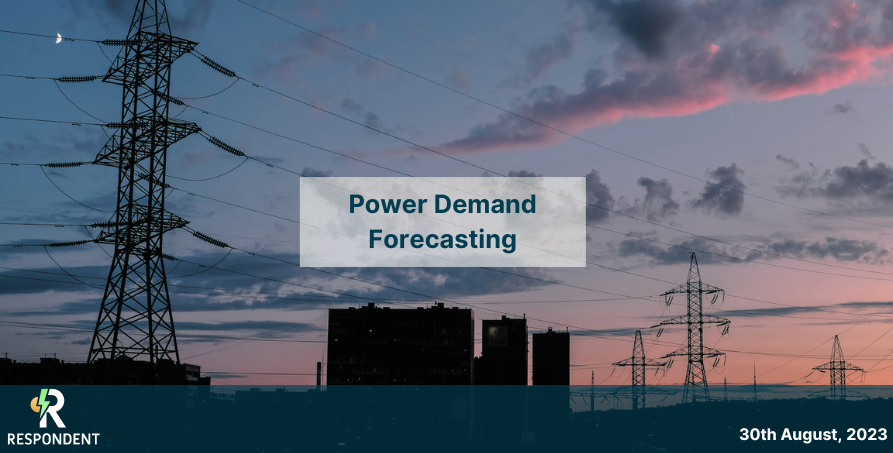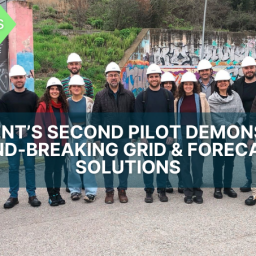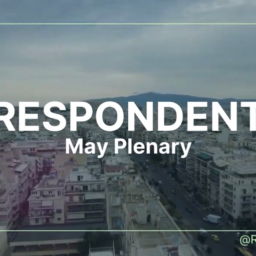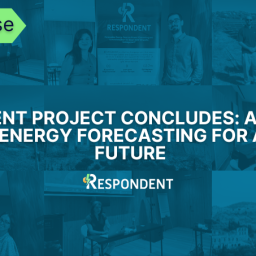
RESPONDENT introduces a ground-breaking approach to power demand forecasting, integrating socio-economic factors with advanced AI/ML and multi-physics simulations to provide highly accurate predictions, ensuring a resilient and efficient energy supply for diverse populations.
WHAT IS POWER DEMAND FORECASTING?
Power demand forecasting concerns the process of estimating how much electricity will be needed in a particular location, area, or region by the population within a specific period of time in the future, helping to ensure that a secure energy supply is both seamless and assured.
Just as weather forecasts help us as individuals to plan for our daily activities, power demand forecasting helps utilities to estimate how much electricity will be needed to ensure that everyone has enough power for their homes, offices, and everything else that uses electricity.
By assisting utilities, grid operators, and policymakers to adequately adjust, plan, and/or readjust for the future electricity consumption of a population, power demand forecasting plays a vital role in safeguarding a secure energy supply, the prevention of overloaded power grids, and that the possibility of blackouts or shortages are mitigated.
HOW DOES POWER DEMAND FORECASTING WORK?
In order to make informed estimates of future electricity consumption, successful power demand forecasting must take into consideration a diverse range of factors that can influence the predictions.
Historical consumption data, for example, is a key element of accurate power demand forecasting, as it helps forecasters to analyse and recognise patterns and trends that have emerged over previous years in relation to electricity use.
Through the collation and analysis of historical consumption data, which can include the identification of electricity consumption patterns, seasonal trends, day-to-day variations, as well as a broad comparison of changes across the economy and society, a well-rounded approach is employed in observing and understanding past trends that lead to more precise predictions of future electricity demand.
Weather forecasting also plays a crucial role in power demand forecasting, as upcoming weather conditions have the potential to drastically impact energy consumption in a home, business, or industry. For example, if it is a particularly hot day, it is likely that there will be increased use of indoor air conditioning, leading to a predictable surge in energy consumption. The inverse is also true for cold days, where the use of heating systems to warm a building rise, thus increasing power usage.
Without such precise weather forecasting that can predict such high temperatures in advance, it is unlikely that energy planners would anticipate such surges in power consumption among a populace, meaning that the capacity to generate power during these critical periods would be challenging, if not severely compromised.
As we can see, the combination of historical consumption data with accurate weather forecasting enables forecasters to make more informed predictions about when and how much electricity will be needed in the future. Such information is crucial for energy providers, grid operators, and policymakers to manage the energy supply efficiently, to prevent blackouts or shortages, and in optimising the appropriate allocation of resources.
WHAT ROLE WILL POWER DEMAND FORECASTING PLAY IN THE RESPONDENT PROJECT?
As with RESPONDENT’s novel method for power generation forecasting, discussed here in one of our previous blogs, the project’s power demand forecasting method represents an innovative use of European space technology and systems that are distinctly absent from available solutions on the market today.
As we have seen, standard power demand forecasting normally considers weather and historical consumption data when attempting to predict future electricity consumption needs. However, existing tools do not currently take into consideration pertinent socio-economic factors, such as the mean income of a population, electricity prices, population density, and other influencing factors that have the potential to impact the precision of power demand forecasts.
RESPONDENT’s method, however, presents an alternative vision of power demand forecasting, comprised of an innovative twofold action that has so far gone unrealised.
Firstly, RESPONDENT’s forecasting approach will not only consider previous weather and historical consumption data, but also the relevant socio-economic components that are absent from existing forecasting practices, such as the average income per capita, how many people live in a particular area, social and political stability, market conditions, etc., that will be considered and integrated into RESPONDENT’s forecast.
These datasets will then be fed into probabilistic, agent-based simulations whose dynamic parameters can be learned from the data while also being able to evolve in time to account for changing circumstances, such as the progressive aging of an apartment building’s residents.
Secondly, RESPONDENT’s forecasting method will leverage the unique capabilities of artificial intelligence/machine-learning (AI/ML) and multi-physics simulations and tools that will be fed historical consumption data, socio-economic data, and local weather forecasts acquired from satellite datasets and the Copernicus Earth Observation (EO) programme to generate a novel power demand forecast and provide the final power demand forecasting module.
Although RESPONDENT’s power demand forecasting will utilise preexisting simulation models and tools, the incorporation of socio-economic data will help to ensure its competitive edge in the marketplace as a cutting-edge and visionary development in the field. RESPONDENT’s power demand forecasting promises to offer a solution with increased effectiveness, accuracy, and reliability, one that can be modified and used in a wide range of circumstances and for different types of consumers and populations.
Once realised, developed, and exploited, the project consortium is confident that RESPONDENT’s power demand forecasting solution can and will be integrated into legacy and modern systems to great effect, ensuring that an increase in the accuracy and reliability of forecasting results are guaranteed that exceed those on the market today, and that can serve a diverse range of socio-economic preconditions with ease. By ensuring that energy planning aligns with the complexities of modern society, RESPONDENT’s vision for power demand forecasting points towards a new era, one that is more resilient, adaptable, and efficient in its use of energy.













